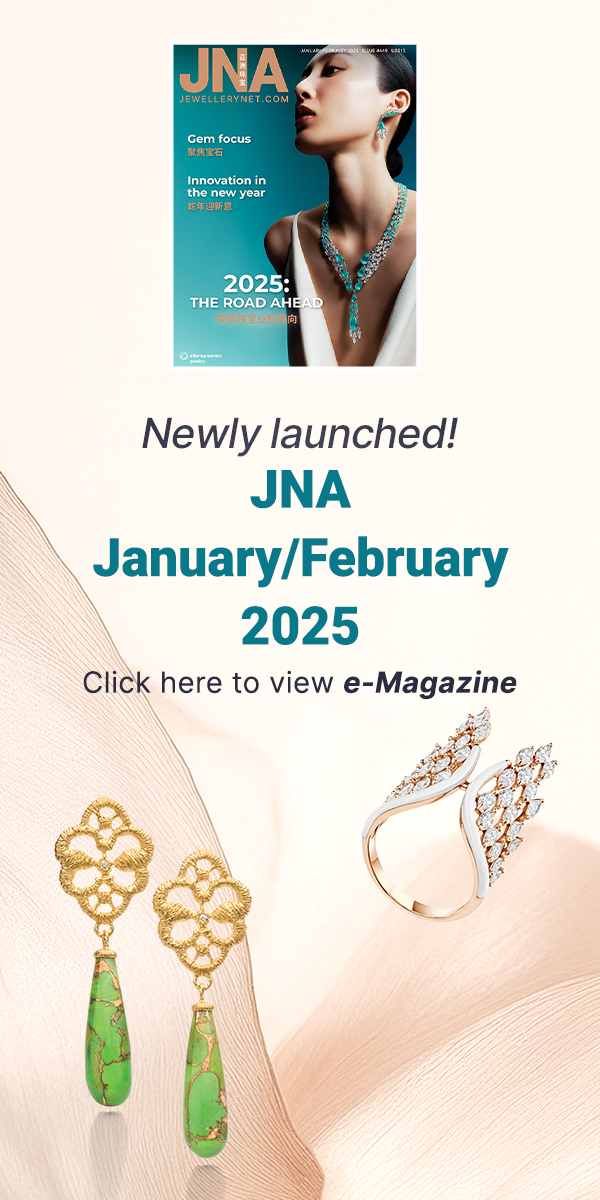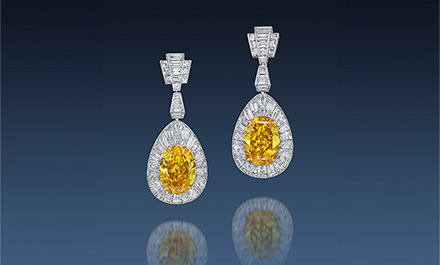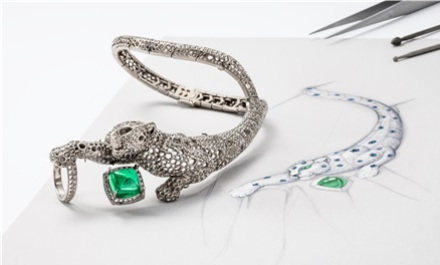This article first appeared in the JNA January-February 2023 issue.
As JNA enters its fourth decade, it examines the market-shaping developments that will influence the course of the gem and jewellery industry moving forward – from evolving consumer priorities, emerging hubs and business strategies to technological advances, product innovation and the metaverse.
1. Gen Z
Along with their millennial counterparts, Gen Z consumers are expected to form over 60 per cent of the luxury market by 2025. This powerful consumer force is already dictating design, retail and business trends today. Born 1997 onwards, Gen Z consumers are socially responsible, tech-savvy and independent thinkers. They support brands that share their values, seek meaningful purchases and appreciate experiential retail. Securing business tomorrow means getting in with these next-generation customers today.
2. ESG
Gen Z consumers take Environmental, Social and Governance (ESG) matters to heart. Sustainability credentials are closely examined while values underpin purchases. The focus expands beyond the environment, with attention being placed as well on the impact of production on local communities, among others.
3. Responsible sourcing and mining
An integral part of the ESG conversation is responsible sourcing and mining. More designers and manufacturers use recycled metals, select mine-to-market gems with a clear chain of custody or with solid sustainability backing and reward ESG efforts with business. Mining technology is also increasingly sophisticated, resulting in responsible and sustainable operations.
4. Traceability
As provenance grows in importance to consumers, traceability measures are gaining ground. By tracking a gem’s journey from mine to market, blockchain initiatives build trust and enhance the selling narrative. Initially applied to diamonds, traceability programmes now extend to coloured gemstones and, most recently, the authentication of bespoke fine jewellery.
5. Market preferences
Next-generation shoppers seek meaningful purchases thus jewellery of special import to them would be their pick. Aside from the company's or brand's ESG profile, they examine whether the piece reflects their personality and worldview. The greater challenge though is persuading these consumers to opt for jewellery over other luxury items or pursuits such as gadgets or travel. Really impressing the value and relevance of the piece to their lives is one way to go.
View detailed report on #1-5 here.
6. Purchase drivers
A significant portion of jewellery sales are self-purchases, a segment that is likely to continue growing in the years to come. Consumers are buying jewellery to reward themselves for their successes, commemorate special events or simply select the item that best fits their style. Some couples are even shopping together for engagement rings, which may eliminate the element of surprise but guarantees satisfaction.
7. New sales channels
Social media and livestreaming are the sales channels of tomorrow for young consumers and the young at heart. Digital natives flock to social media for the latest trends and buys. Online jewellery shops on Instagram, WeChat and other Chinese social platforms have accumulated a steady supply of customers that grew even more during the digital days of the pandemic. Livestreaming likewise generates substantial sales, particularly in China where popular hosts and enticing products draw in shoppers.
8. KOLs and KOCs
Key Opinion Leaders (KOLs) and Key Opinion Consumers (KOCs) have become a powerful marketing strategy for brands and companies, thanks to their solid following. New rules requiring disclosure for paid endorsements notwithstanding, KOLs and KOCs provide substantial brand awareness and recognition from target audiences in a world ruled by social media, celebrity endorsements and influencer marketing.
9. Alternative sources of funding
Grants, finance funds and even crowdsourcing campaigns have injected capital into the gem and jewellery industry, after the exodus of several banks in the last few years. Special loans using gemstones as collaterals also exist to provide financial support to the trade. Fintech companies likewise offer assistance.
10. AI in jewellery trade
Artificial Intelligence (AI) is powering diamond grading solutions, yielding faster and consistent results. Sarine and GIA are putting the advantages that AI brings to full use in their grading products. AI is likewise revolutionising the jewellery retail sector by automating processes, enabling virtual try-on and visualisation services and facilitating bespoke and personalised functions.
View detailed report on #6-10 here.
11. Smart manufacturing
AI also figures in smart manufacturing, which relies on digital technologies to transform the traditional jewellery production process. Aside from AI, smart factories integrate other emerging technology such as Robotic Process Automation to create jewellery. Automation can be extended to companies’ back-office and management systems for a fully digital operation.
12. 3D printing
3D printing is poised to revolutionise jewellery manufacturing in precious metals. While still costly, as economies of scale make prices for powder more competitive, jewellers will be able to bypass common manufacturing challenges to produce innovative pieces.
13. Online trading platforms for gemstones
Online trading platforms have moved into gemstone territory led by Gembridge and GemCloud. Though coloured gemstones are a much more varied breed than diamonds, technological advances in colour grading and sophisticated functions and logistics aid the digital process.
14. Digital initiatives for pearls
Pearls were initially not deemed suitable for digital trading as their qualities needed to be viewed in person. Initiatives stemming from pandemic responses proved otherwise. Japanese pearl dealers entertained Chinese buyers that had no qualms over buying goods online. Other pearling hubs likewise conducted business online and will maintain a digital presence despite the return of in-person trading.
15. Lab-grown diamonds
Demand for lab-grown diamonds (LGDs) has intensified in recent years, with the category firmly establishing its position in the fine jewellery world. Providing full disclosure, independent LGD jewellery brands are weaving modern narratives in the market. Interest from world-famous celebrities and international design houses likewise build consumer confidence in the product.
View detailed report on #11-15 here.
16. Lab-grown gems
Growing market acceptance of lab-grown goods bode well for lab-grown gemstones. Intensive research and development, along with technological advances, enable manufacturers to produce more natural-looking stones that appeal to higher-end customers.
17. Mining technology
Mining operations have become more sophisticated as miners seek to expand production in a responsible manner while minimising costs. Belmont Mine of Brazil, which pioneered optical sorting in its mines, scores another first with the introduction of laser sorting for its emerald production.
18. Geopolitical factors
As indicated by the Covid-19 pandemic and the Ukraine war, the gem and jewellery industry does not live in a bubble. The performance of supply chains, logistics and business flows largely hinges on a peaceful, healthy and secure world. Each crisis brings its attendant challenges, which the trade handles with its customary resilience, emerging on the other side armed with lessons for greater efficiencies.
19. China
Silenced for a few years due to the pandemic, China is reopening its borders and, with these, the vast business opportunities within its shores. While it may take a while to rebound, China’s market remains as attractive as ever.
20. Southeast Asia
Southeast Asia is piquing the interest of many on the lookout for new markets. Home to some 600 million people, the region’s appeal is enhanced by its pool of high-net-worth individuals who appreciate rare gems and spectacular jewellery.
View detailed report on #16-20 here.
21. Dubai
Dubai is strengthening its position as one of the leading trade hubs for rough and polished diamonds. It is also growing in prominence for coloured gemstones and lab-grown diamonds. The Dubai Diamond Exchange sees strong demand from companies hosting tenders and auctions. And next year, the UAE will chair the Kimberley Process.
22. Omnichannel strategies
Online and offline synergies apply to retail, B2B connections and every sales and marketing effort worth its salt. Physical stores were once forecast to lose relevance in a digital world. This however discounted the value that shoppers place on human interaction and the joy of beholding one’s purchase in all its glory. Online channels and e-commerce, for their part, are convenient and provide valuable information prior to purchase online or at stores. The two worlds now co-exist and rightly so.
23. Trade fairs
While online platforms and digital events kept communication and trade lines open during lockdowns, the Covid-19 pandemic underscored the importance of in-person trade shows. There is simply no replacing the face-to-face business discussions, product examination, personal connections and trust-building interactions afforded by physical fairs.
24. Digitalisation
The Covid-19 pandemic accelerated the industry’s digital transformation. This is likely to continue in the post-lockdown era as digital solutions keep on powering businesses and offer new channels of trade.
25. Phygital future
Jewellers are exploring the metaverse, which merges the physical and digital worlds, with NFTs (non-fungible tokens). This gives rise to valuable standalone NFTs and phygital collections in various forms – either full counterparts or some representation in each realm. Further progression into Web3 – the decentralised, token-based iteration of the Internet – opens up more growth avenues for the gem and jewellery industry.
View detailed report on #21-25 here.
26. Branded jewellery
Brands transform products into aspirations. They tell the story of a journey, a lifestyle, a concept, an emotion, an ambition. Consumers gravitate towards the narrative that appeals to them most. Research by De Beers Group found that branded diamond jewellery represented two-thirds of all diamond jewellery purchases in the US in 2021 and almost 80 per cent of all sales by value. Gen Z led other consumer segments in opting for branded items. China is also enamoured with brands, with consumers placing a premium on well-defined labels.
27. Branded diamonds
Branded diamonds, most often with patented cuts supported by enchanting narratives, feed into consumers’ desire for prestige and exclusivity. Such efforts are paying off, with companies building brands around their diamonds that people align with for greater traction in the market.
28. Making the cut
Unusual and eclectic cuts for coloured gemstones oblige shoppers’ thirst for novelty and self-assurance. That extra special detail always goes a long way.
29. Experiential retail
Physical stores are evolving beyond transactions to lifestyle destinations as shoppers demand memorable shopping experiences. Online connectivity and social access are now bare minimums in the face of augmented reality, bespoke services and in-store masterclasses that can enhance client engagement and loyalty.
30. Smart, multifunctional jewellery
Combining fashion and function, smart jewellery gives a new dimension to wearable tech, from health-tracking pendants to necklaces that double as a messaging app and as a camera. What about a smart ring that sends notifications, displays messages and turns into an earphone when needed? Or a bracelet or ring that acts as a remote control for one’s camera phone? The possibilities are endless.
31. Cultural elements
In the Guochao trend that has been sweeping China, elements of traditional Chinese culture are given a modern twist and incorporated in present-day products, jewellery included. Millennials and Gen Zs are among the trend’s strongest supporters, fuelled by a strong wave of national pride. Such close-to-home themes increasingly appeal to consumers. International players must however be careful not to cross the line into cultural appropriation.
32. Online auctions
Auction houses took to the Internet when the Covid lockdowns shuttered physical sales. This new business model proved effective and, by all accounts, will remain part of their business strategies. Christie’s allows clients to bid online through its mobile app and its WeChat mini program, while Phillips Jewels reports unprecedented online bidding activity at its auctions.
33. Cryptocurrency payments at auctions
In June 2021, an anonymous buyer bought a 100-carat pear-shaped D-colour flawless diamond for US$12.3 million at Sotheby’s. This was the highest price achieved for any jewellery or gemstone purchased with cryptocurrency –something worth keeping an eye on.
34. Vintage rules
The hold of the past remains strong as antique and vintage jewellery pieces continue to captivate the market. Smaller and wearable designs are particularly in demand. Proving the timelessness of truly exceptional design, vintage-inspired pieces also move well, with Art Deco patterns, fine enamel work and chunky retro styles bridging the past and the present.
35. Jewellery styles
Ear jewellery dominated the Covid-19 era of digital meetings. As in-person interactions return, styles are bolder and more expressive. Brooches provide a pop of colour and character. Men are expanding their watch, chain and bracelet tandem with pearl necklaces, silver or platinum earrings, diamond ear studs and fancy brooches. And gender-fluid designs break down barriers of style and tradition.
36. Cross-sectoral collaborations
Jewellery is expanding its horizons, with collaborations in different lifestyle spaces such as fashion, NFTs and art. Not only are jewellery designs influenced by trends in these sectors, such relationships are deepened by fashion-label pop ups in jewellery stores, fine art-inspired jewellery collections and concert tie-ups for client loyalty programmes, among others. Select jewellery brands are also finding a home in concept stores with curated themes.
37. Digital and expanded certificates
Certification, often the bedrock of client trust, is taking new forms and covering new areas. GIA is turning all its certificates digital, starting with its popular Diamond Dossier that is now only available in digital format. Gemmological laboratories are offering more detailed certificates for lab-grown diamonds and gems, and new certificates and grading reports are being introduced for fields such as colour standards for gemstones and even sustainable mining.
38. Non-traditional traditions
While classics will always be appreciated, today’s social citizens are perennially in pursuit of novelty. This philosophy is fuelled by the desire for significantly distinctive personas. Engagement rings, which first expanded from diamonds into coloured gemstones, are now embracing new styles such as toi et moi designs. Rubies, emeralds and sapphires remain the leading royalty of the coloured gemstone world but share the limelight with princes and princesses such as Paraiba tourmaline, spinel and Santa Maria aquamarine.
39. New generation of leaders
Second-, third- and fourth-generation leaders are bringing their family enterprises to new heights. Armed with a jewellery pedigree honed by the finest universities and perfected on the job, this younger breed of leaders is bold enough to innovate and cautious enough to pursue sustainable growth. The industry stalwarts of tomorrow are also invigorating the fields in which they operate with a collegial zeal and visionary ambition.
40. Trade collaborations
Trade organisations and associations are taking the lead on many business, technical and strategic issues to bolster their sector’s prospects. Collaborating with industry partners, providing platforms for discussion and coordinating with fellow trade bodies help ensure sustainable development and growth avenues. The industry is strong when united and such leadership is needed to maintain growth in an ever-evolving market.









